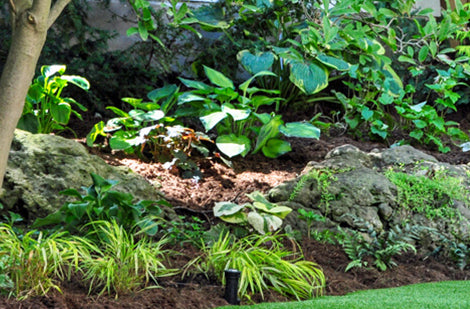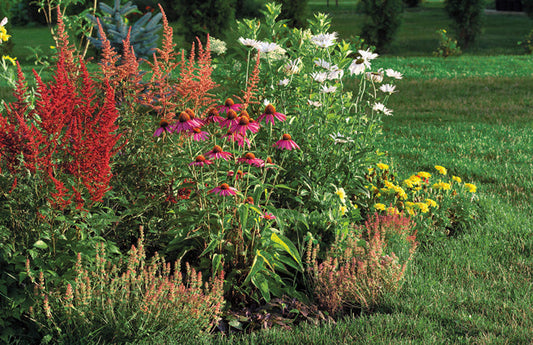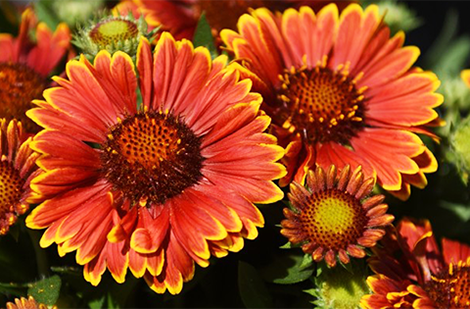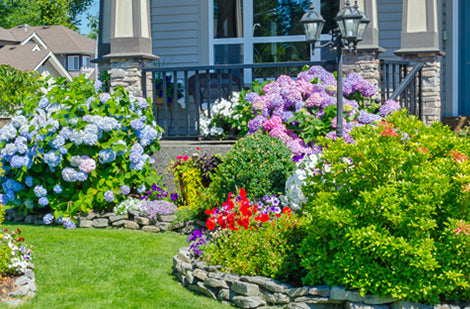Tanacetum coccineum
Tanacetum coccineum – Painted Daisy
Tanacetum coccineum – Painted Daisy
Exposure
- Sun
- Partial shade
Rusticity
Bloom time
- June
- July
- August
- September
- Colourful daisy-like flowers
- Fine, textured foliage
- Long blooming (can rebloom in fall)
- Very hardy
- Produces natural insecticides (pyrethrins)
Illuminate your garden with Painted Daisy (Tanacetum coccineum), a vibrant herbaceous perennial! This plant charms with its delicate, finely cut foliage, reminiscent of ferns, and its showy, daisy-like flowers that bloom in a dazzling array of colours: white, red, purple, and pink, often with a bright yellow centre. Bringing striking colours to the garden from early summer and capable of reblooming in fall, it's an easy-care plant of lasting beauty, and is known to naturally produce pyrethrins, acting as a natural repellent against certain insects.
Characteristics
- Foliage : The foliage is medium green, finely cut, and resembles the delicate texture of a fern. It forms a dense clump at the base. The plant is known to naturally produce pyrethrins.
- Bloom : Produces showy, daisy-like flowers borne on upright stems above the foliage. Flower colours range from white to red, purple, and pink, most often with a yellow centre. Blooming begins in early summer and continues through mid-summer. Pruning after the first flush of blooms can encourage additional flowering in autumn.
- Light : Thrives in full sun to part shade. Sufficient sunlight promotes more abundant flowering and better habit.
- Habit : Its habit is a compact clump or mound at the base, with upright flower scapes.
- Growth : Its growth is medium. It reaches a mature height of approximately 45 to 75 cm (1.5 to 2.5 feet) and spreads 45 to 60 cm (1.5 to 2 feet).
- Humidity : Requires well-drained soil. It appreciates average moisture but tolerates drought once established.
- Soil : Adapts to a variety of soils, but prefers well-drained soil. It is not fussy about soil type.
- Temperature : Extremely hardy. It is well-adapted to cold winters.
- Watering : Requires average watering. Water regularly until established. Once established, it is drought-tolerant, but consistent moisture is preferred for prolonged blooming.
- Resistances : Deer resistant.
Uses
- Types of Use : Excellent for borders and flower beds, in containers, in mass plantings, and as a cut flower or cut foliage. It can serve as a focal point thanks to its striking colours. It is suitable for cottage and eclectic garden styles. Thanks to its pyrethrin production, it can contribute to a garden environment less favourable to certain harmful insects, acting as a natural repellent plant nearby.
- Decorative Advantages : Brings an explosion of vibrant colours to the garden and visual interest with its fine, textured foliage. Its long blooming period and ability to rebloom in autumn add continuous beauty. It attracts butterflies and bees.
Care
- Fertilization : Light fertilization in spring with a balanced perennial fertilizer is generally sufficient.
- Pruning : Cut back plants after the first bloom to encourage additional flowering in autumn. Cut back the clump in late winter or early spring for a neat appearance and to stimulate new growth.
- Planting :
- Distance : Space plants approximately 30 to 45 cm (12 to 18 inches) apart to allow for good development and air circulation.
- Depth : Plant the root ball at the same level as the soil in the original container.
- Period : Spring or early fall are the best times for planting.
Plant details
Dimensions
Dimensions
Characteristics
Characteristics
Habit:
- In a clump
- Bushy
Flowering colours:
- White
- Red
- Purple
- Pink
- Yellow
Plant needs
Plant needs
Watering:
- Average
Maintenance:
- Easy
Soil requirement:
- Well drained
Features
Features
Resistance:
- White-tailed deer
- Cold
- Drought
Attract:
- Butterflies
- Bees
Use:
- Border
- Flowerbed
- Container
- Block
- Cottage garden
- Cut flower
Attribute:
- Long flowering
- Self-cleaning
- Cut flower
- Decorative foliage (fine)
- Very hardy
- Natural repellent (pyrethrins)


Related articles
-

Perennials for all occasions
Read the articleOsez créer des associations inédites qui sauront refléter votre personnalité, même si pour cela vous deviez déplacer certaines vivaces pour mieux les mettre en valeur.
-

Landscaping with perennials
Read the articleVariétés à découvrir, la tomate se savoure crue, en sandwich, en bruschetta ou en salade. Cuite, c'est l'ingrédient de base de sauces, soupes et salsas.
-

Perennials proper maintenance: cut and fertilize
Read the articleLa grande popularité des vivaces vient du fait qu'après avoir été oubliées pendant des mois au cours de l'hiver, elles réapparaissent sur la scène plus énergiques et surprenantes que par...
-

How to plant perennials in your garden
Read the articleEn pénétrant au jardin, ce sont souvent les plantes vivaces que l’on remarque en premier. Un massif de sauges, d’hémérocalles, d’astilbes, d’échinacées ou de lavande offre un spectacle d’une beauté...










